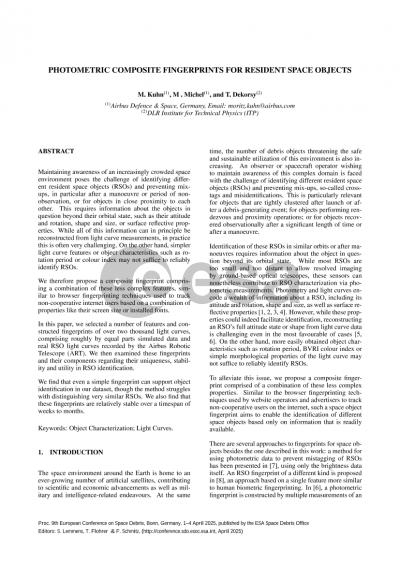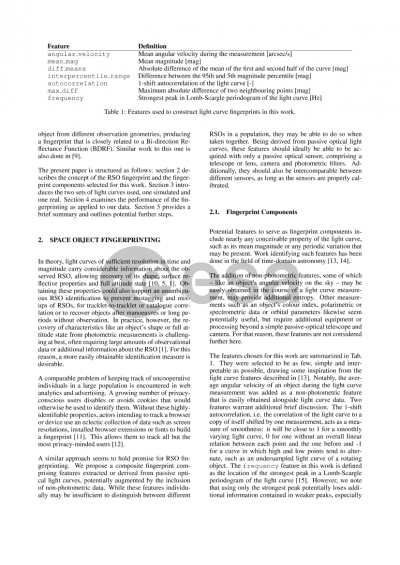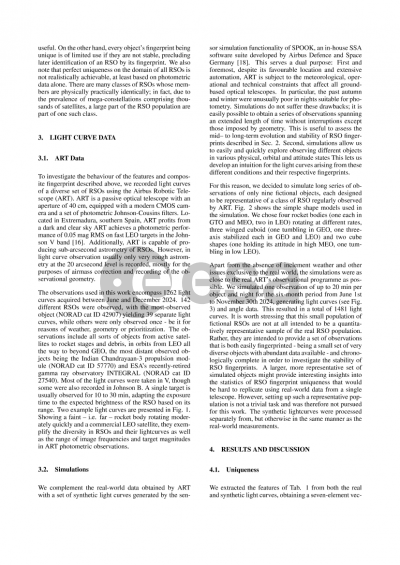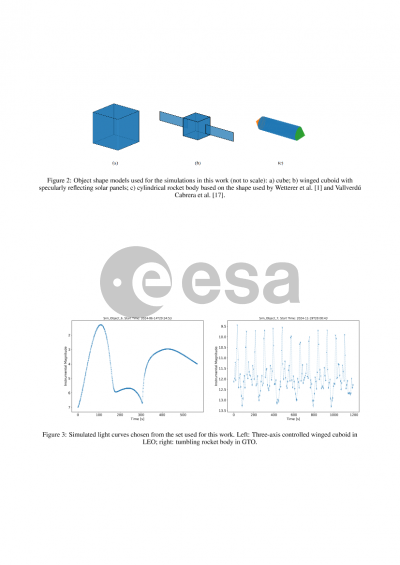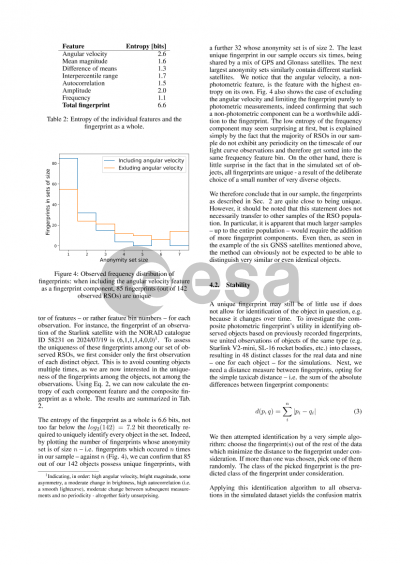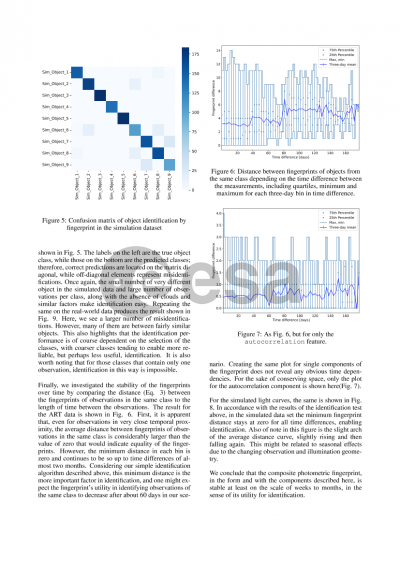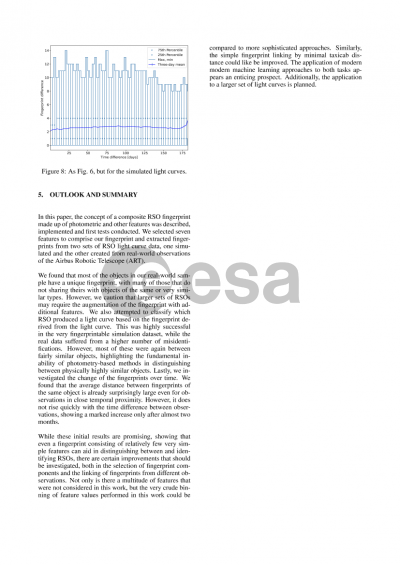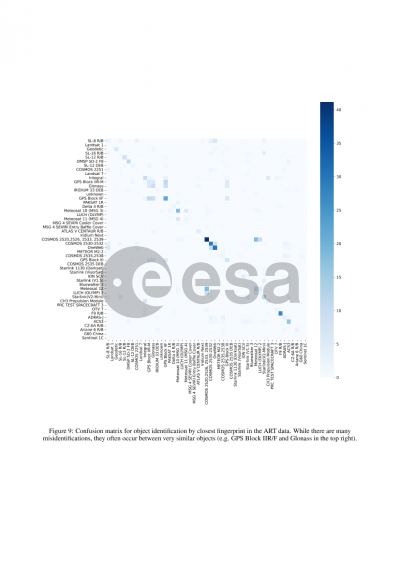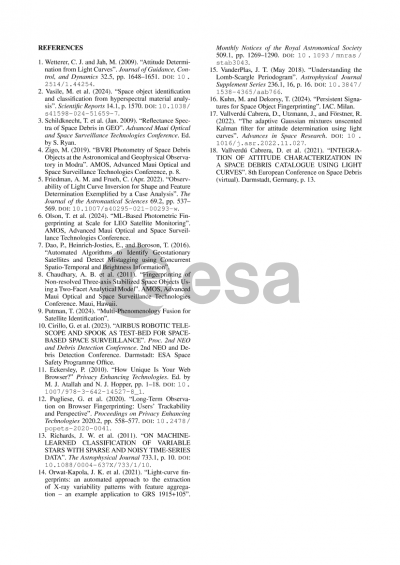Document details
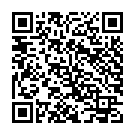
Abstract
The space environment around the Earth is home to an ever-growing number of artificial satellites, contributing to scientific and economic advancements as well as military and intelligence-related endeavours. At the same time, the number of debris objects threatening the safe and sustainable utilization of this environment is also increasing. An observer or spacecraft operator wishing to maintain awareness of this complex domain is faced with the challenge of identifying different resident space objects (RSOs) and preventing mix-ups, so-called cross-tags and misidentifications. This is particularly relevant for objects that are tightly clustered after launch or after a debris-generating event; for objects performing rendezvous and proximity operations; or for objects recovered observationally after a significant length of time or after a manoeuvre.
Identification of these RSOs in similar orbits or after manoeuvres requires information about the object in question beyond its orbital state. While most RSOs are too small and too distant to allow resolved imaging by ground-based optical telescopes, these sensors can nonetheless contribute to RSO characterization via photometric measurements. Photometry and light curves encode a wealth of information about a RSO, including its attitude and rotation, shape and size, as well as surface reflective properties. However, while these properties could indeed facilitate identification, reconstructing an RSO’s full attitude state or shape from light curve data is challenging even in the most favourable of cases. On the other hand, more easily obtained object characteristics such as rotation period or BVRI colour index or simple morphological properties of the light curve may not suffice to reliably identify RSOs.
To alleviate this issue, we propose a composite fingerprint comprised of a number of these less complex properties. Similar to the browser fingerprinting techniques used by website operators and advertisers to track non-cooperative users on the internet, such a space object fingerprint aims to enable the identification of different space objects based only on information that is readily available.
This paper examines different photometric signatures and optical photometry-derived object characteristics regarding their suitability as space object fingerprint components. This includes their uniqueness or ability to discriminate between different objects, their stability over different timescales and the practicality of obtaining them. To assess different photometric properties in these regards, we used computer simulations as well as real-world data in the form of BVRI photometry and light curves gathered using a 40 cm optical telescope, the Airbus Robotic Telescope (ART).
Preview
